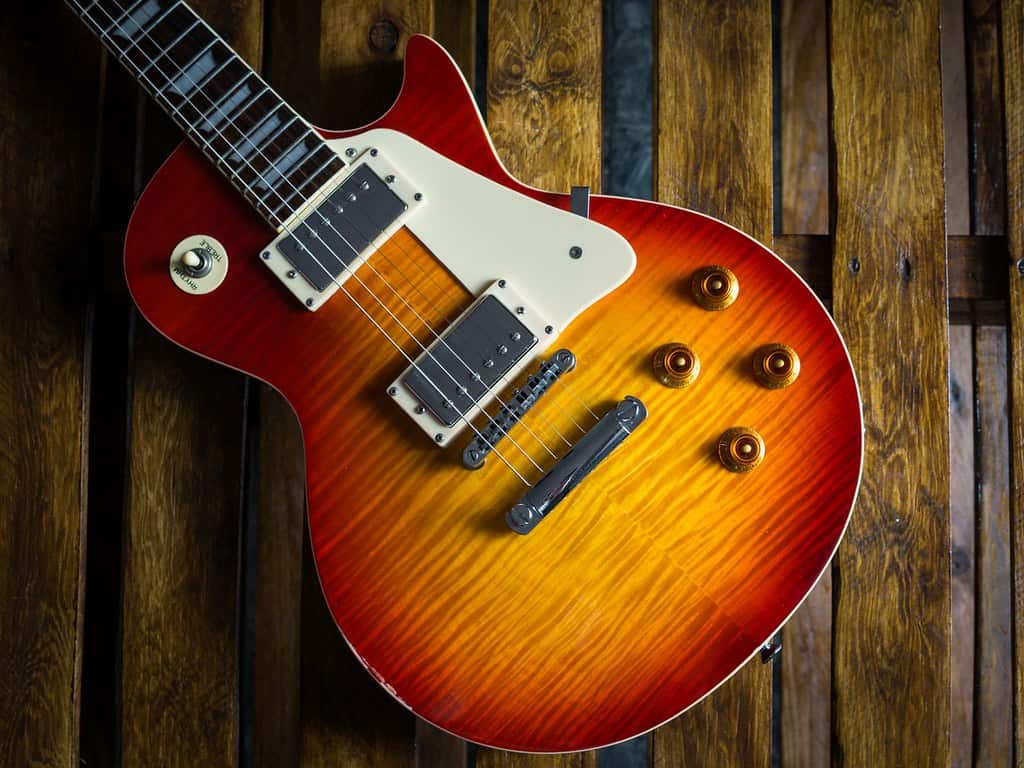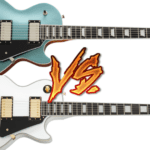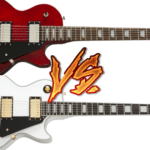To many players, weight is a defining factor when purchasing a new guitar. Be it back problems, or just preference, having a ballpark of how much a guitar weighs can be very helpful for your final decision.
And I’m talking about ballparks here because every single guitar is different. Even 2 same model instruments could differ greatly in weight.
This is because the wood was once a living thing, and there are a plethora of factors that could affect its mass in different ways.
So take with a grain of salt everything said in this article, and consider it just an average.
But getting to the point: How much does a Les Paul weigh?
A regular Les Paul, built with typical tonewoods such as mahogany, maple, and rosewood will weigh, on average 10 lbs (4.6 kg.). This is with standard hardware. With locking tuners and/or a vibrato tailpiece, it will be heavier. A Les Paul inside its hardshell case will be around 18 to 20 lbs (9 kg.)
For those who want a deeper dive into this topic, in this article, I will try to provide you with the essential information about what makes a Les Paul heavier or lighter, and the implications it has.
Are you ready to get started?
Let’s go!
Weight difference between weight relieved, chambered, and solid LPs
Since Les Pauls are made traditionally out of hardwoods, when Gibson started having trouble sourcing lightweight mahogany in bulk, these instruments began becoming heavier, something that many players complained about.
The manufacturer, as a solution, through the years devised different ways of relieving weight from the body of the instruments.
From poking holes in the mahogany to chambering it, here is a table with estimations of how much different weight relieved Les Pauls could weigh:
| Weight relief method | Average weight |
| Solid-body | 9.5 to 12 lbs |
| Traditional | 9 to 10.5 lbs |
| Chambered | 7.5 to 9 lbs |
| Modern | 8.5 to 10 lbs |
| Ultra-modern | 8.5 to 9.5 lbs |
Do heavier Les Pauls sound better?
There is an age-old debate about heavier guitars having more body and sustain.
The counter-argument, detractors of this idea wield is that lighter guitars are more resonant and sound more open.
This whole topic requires a detailed discussion, and I have written a separate article on it.
You can check it out here:
What makes an LP heavier?
Body and neck materials are, of course, one of the most important factors that define how much a Les Paul weighs.
However, hardware is also something to take into consideration since most parts are made of metal, and its weight starts adding fast.
Things such as tuners the tuners and the bridge can have a noticeable impact on the overall weight and balance of the instrument.
What’s more, locking tuners and vibrato tailpieces such as Bigsbys are known for increasing the weight of the instrument in an uncomfortable fashion to some players.
Take every single detail into consideration if guitar weight is a sensible matter to you.
Is the Les Paul a heavy guitar?
The Les Paul is considered to be a rather heavy guitar. Its hardwood body and neck and its rather thick profile make for an instrument affected by its tonewood weight. This is why Gibson introduced the weight relieved bodies for modern models due to the struggles to source lightweight mahogany at a scale.
Les Paul weight with a case
If you are shipping a guitar, taking delivery of one, or traveling, perhaps it’s important for you to know how much a Les Paul would weigh inside its case.
If we consider a typical hardshell case of between 8 and 10 lbs, and we add that to the average weight of a Stratocaster, we get that a Les Paul inside its case would be around 20 lbs total.
However, it’s important to consider that if the guitar it’s being shipped, it all may come inside a box with extra padding material, and the weight could be even a few pounds higher.
Tip for looking up the weight of a guitar
Finally, if you really want exact info about the weight of a particular instrument, you can try looking it up on Sweetwater. They usually show you the units they have in stock, and how much they weigh.

Hello there, my name is Ramiro and I’ve been playing guitar for almost 20 years. I’m obsessed with everything gear-related and I thought it might be worth sharing it. From guitars, pedals, amps, and synths to studio gear and production tips, I hope you find what I post here useful, and I’ll try my best to keep it entertaining also.





